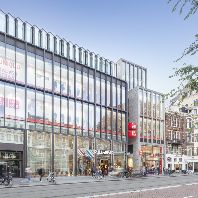2007 and 2008 saw the emergence of Turkey and Russia as the key target destinations for retailers expanding internationally, according to new retail research from real estate advisor Jones Lang LaSalle.
Turkey accounted for 11.3% of the total cross border movements, whilst 10.6% of retailers entered Russia. Central and Eastern Europe dominated the ranking of most popular locations, accounting for the top five destinations. The UK was ranked at number seven and attracted 6.6% of international retailer movements.
Neville Moss, Head of European Retail Research at Jones Lang LaSalle commented: "Although the current economic slowdown has impacted upon demand, retailers are still showing an interest to enter Central & Eastern Europe, although many are now only considering franchise partners to minimize risk."
Looking ahead, James Dolphin, Head of pan-European Retail Agency at Jones Lang LaSalle said: "2009 is set to be a year of opportunity. Deals are likely to be very favorable for tenants even in prime locations, with the best lease terms available for the best brands with strong covenants. Although retailers' confidence remains reasonably strong in the Central European markets, they will now be more selective in terms of prime high streets and projects in those countries with large development pipelines, prioritizing quality in terms of location, concept and tenant mix. Western and Southern Europe will become more attractive to North American brands in 2009 and we forecast a range of retailers such as Forever 21, Anthropologie, Hollister and Crate & Barrel to take advantage of the favorable deals that will be available."
In Turkey, some 1 million m² of shopping centre space has opened between January 2007 and December 2008, helping fuel the rise in international retailer demand. Global retailers such as Gap, Muji and Banana Republic all made the move into Turkey during 2007/2008, as did luxury brands such as Calvin Klein, Chanel and YSL (although several of these were as concessions in Department stores).
Romania now has the largest spectrum of brands in Central Europe and has attracted active retailers such as Peek & Cloppenburg, Karen Millen, Reserved and Hervis. Expansion via both direct and franchise routes are increasingly common, with Poland, Romania and Russia in particular seeing a notable increase in franchise businesses. In Western Europe, Westfield London accounted for almost half of new entrants to the UK retail market, with Ugg (Australia), Hue (USA) and David Mayer (France) seizing the opportunity for representation in the capital without paying the high rents of the West End.
In Southern Europe, Portugal remains an important target for international retailers, offering good rental values and a modern shopping centre stock. Due to a lower exposure to the credit crisis and a limited supply of home-grown retail, the Belgian market is a high priority for retailers looking to move cross border.
In recent years, the USA has been the dominant origin of cross border retailers, though in 2007 and 2008 Italy headed the list with 16.6% of all movements originating here. The USA has dropped to second with 14.2%, followed by the UK at 13.3%. France also featured highly with 11.7% of all cross border movements originating there, whilst domestic retailers in Sweden and the Netherlands tend to look abroad, often to larger nearby countries given the small size of the home markets.
Source: JLL






